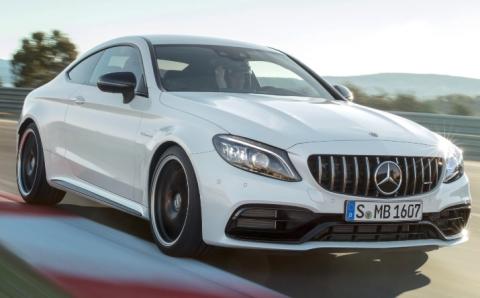Bosch and Mercedes-Benz’s joint project to develop urban automated driving has now entered a new stage. Their pilot project for an app-based ride-hailing service using automated Mercedes-Benz S-Class vehicles has now been launched in the Silicon Valley city of San José.
Monitored by a safety driver, the self-driving cars shuttle between West San José and downtown, along the San Carlos Street and Stevens Creek Boulevard thoroughfares. The service will initially be available to a select group of users. They will use an app developed by Daimler Mobility AG to book a journey by the automated S-Class vehicles from a defined pick-up point to their destination.
Mercedes-Benz and Bosch hope this trial will provide valuable insights into the further development of their SAE Level 4/5 automated driving system. The partners also expect to gain further insights into how self-driving cars can be integrated into an intermodal mobility system that also includes public transportation and car-sharing.
In mid-2017, San José was the first U.S. city to invite private companies to carry out field tests of automated driving and analyze the growing challenges in road traffic. Especially in congested city traffic, self-driving cars’ permanent 360-degree surround sensing can potentially enhance safety, and their smooth driving style can improve traffic flow.
From August through November, representatives of the project joined staff from the City of San José to discuss the project with several community organizations. At seven meetings of neighborhood and business groups along the corridor, the team discussed the project goals, demonstrated the vehicle technology, explained the layers of safety redundancy built into the project, and took suggestions for future use cases.
For some two and a half years now, Mercedes-Benz and Bosch have been working together on solutions for automated driving in cities. Their common goal is an SAE Level 4/5 driving system for fully automated and driverless vehicles, including the software for vehicle management. However, they are not interested in prototypes, but instead want to develop a production-ready system that can be integrated into different vehicle types and models.
In their work to develop software for controlling vehicle movement, the partners deliberately do not rely solely on artificial intelligence and clocking up test mileage. Their engineers also use simulations and specially designed proving grounds to specifically address the kind of driving situations that occur only very rarely in road traffic. For this purpose, engineers at the Immendingen testing and technology center in Germany can also make use of a 100,000 square-meter proving ground designed especially for automated driving.
There, complex traffic situations can be reproduced extremely accurately, and as often as desired. For Mercedes-Benz and Bosch, thoroughness and safety are the top priorities. In addition, their alliance is not exclusively concerned with the road and weather conditions in the United States. While one part of the team is based in Sunnyvale, a Silicon Valley city between San José and San Francisco, another part comprising engineers from both companies works in the Stuttgart area.
Wherever they work, the Mercedes-Benz and Bosch associates sit desk to desk. This ensures short decision-making channels and rapid exchange across disciplines. And at any time, associates can draw on the knowledge and expertise of their colleagues in their parent companies.
Here, Bosch know-how ranging from sensors, control units, and steering and brake control systems to entire automotive subsystems can be seamlessly complemented by Mercedes-Benz’s long years of experience in systems integration and automaking.
The division of labor within the project is no different. Mercedes-Benz’s task is to make the jointly developed driving system ready for installation in the vehicle, and to provide the necessary trial vehicles, test bays, and test fleets. For its part, Bosch develops and manufactures the components for urban automated driving that the alliance has identified.
Platform allows integration of automated vehicles into taxi fleets
Specially for their automated ride-hailing service pilot project, Bosch and Mercedes-Benz have taken a further partner on board: Daimler Mobility AG is developing and testing a fleet platform to accompany the pilot operation phase. This allows potential ride-hailing partners to seamlessly integrate self-driving (Mercedes-Benz) vehicles into their service portfolio.
The platform manages both self-driving and conventional vehicles, including operation and maintenance. An app-based mobility service for conventionally driven Mercedes-Benz vehicles went into operation in the Bay Area in the fall of 2019. The service is also available in the German capital Berlin.
Monitored by a safety driver, the self-driving cars shuttle between West San José and downtown, along the San Carlos Street and Stevens Creek Boulevard thoroughfares. The service will initially be available to a select group of users. They will use an app developed by Daimler Mobility AG to book a journey by the automated S-Class vehicles from a defined pick-up point to their destination.
Mercedes-Benz and Bosch hope this trial will provide valuable insights into the further development of their SAE Level 4/5 automated driving system. The partners also expect to gain further insights into how self-driving cars can be integrated into an intermodal mobility system that also includes public transportation and car-sharing.
In mid-2017, San José was the first U.S. city to invite private companies to carry out field tests of automated driving and analyze the growing challenges in road traffic. Especially in congested city traffic, self-driving cars’ permanent 360-degree surround sensing can potentially enhance safety, and their smooth driving style can improve traffic flow.
From August through November, representatives of the project joined staff from the City of San José to discuss the project with several community organizations. At seven meetings of neighborhood and business groups along the corridor, the team discussed the project goals, demonstrated the vehicle technology, explained the layers of safety redundancy built into the project, and took suggestions for future use cases.
For some two and a half years now, Mercedes-Benz and Bosch have been working together on solutions for automated driving in cities. Their common goal is an SAE Level 4/5 driving system for fully automated and driverless vehicles, including the software for vehicle management. However, they are not interested in prototypes, but instead want to develop a production-ready system that can be integrated into different vehicle types and models.
In their work to develop software for controlling vehicle movement, the partners deliberately do not rely solely on artificial intelligence and clocking up test mileage. Their engineers also use simulations and specially designed proving grounds to specifically address the kind of driving situations that occur only very rarely in road traffic. For this purpose, engineers at the Immendingen testing and technology center in Germany can also make use of a 100,000 square-meter proving ground designed especially for automated driving.
There, complex traffic situations can be reproduced extremely accurately, and as often as desired. For Mercedes-Benz and Bosch, thoroughness and safety are the top priorities. In addition, their alliance is not exclusively concerned with the road and weather conditions in the United States. While one part of the team is based in Sunnyvale, a Silicon Valley city between San José and San Francisco, another part comprising engineers from both companies works in the Stuttgart area.
Wherever they work, the Mercedes-Benz and Bosch associates sit desk to desk. This ensures short decision-making channels and rapid exchange across disciplines. And at any time, associates can draw on the knowledge and expertise of their colleagues in their parent companies.
Here, Bosch know-how ranging from sensors, control units, and steering and brake control systems to entire automotive subsystems can be seamlessly complemented by Mercedes-Benz’s long years of experience in systems integration and automaking.
The division of labor within the project is no different. Mercedes-Benz’s task is to make the jointly developed driving system ready for installation in the vehicle, and to provide the necessary trial vehicles, test bays, and test fleets. For its part, Bosch develops and manufactures the components for urban automated driving that the alliance has identified.
Platform allows integration of automated vehicles into taxi fleets
Specially for their automated ride-hailing service pilot project, Bosch and Mercedes-Benz have taken a further partner on board: Daimler Mobility AG is developing and testing a fleet platform to accompany the pilot operation phase. This allows potential ride-hailing partners to seamlessly integrate self-driving (Mercedes-Benz) vehicles into their service portfolio.
The platform manages both self-driving and conventional vehicles, including operation and maintenance. An app-based mobility service for conventionally driven Mercedes-Benz vehicles went into operation in the Bay Area in the fall of 2019. The service is also available in the German capital Berlin.
- Category
- For All








Comments